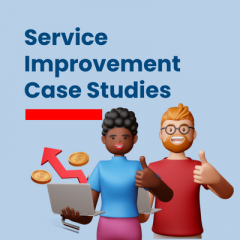
By Vincent Geffray, Senior Director of Product Marketing at Everbridge
So what would you say the situation of IT Service Management looks like in 2018?
I would start with a fact, which is that we’ve reached the point where the human brain can no longer cope with the hyper complexity of today’s modern business applications. This complicates the task of IT support professionals as the required levels of knowledge on this new applications and new technologies are also increasing.
Meanwhile, IT organisations keep receiving more requests from the business for more sophisticated IT services and apps and they are asked to deliver 100% availability on more services than never before. And that’s not all… The rising cyber threats and application failures leads to higher time spent on unplanned work and firefighting.
At the end of the day, we need to more with the same!
Has the increased complexity of IT made IT more stable?
In fact, in today’s interconnected complex and always-on digital world, the tiniest technical glitch can have huge consequences. Whether it is a cyber-attack, an application failure, an application deployment issue, a datacenter outage or a manmade issue, these are all critical events that can potentially quickly turn into High Impact-High Urgency event we would quickly categorize as P1s, Sev1s or Major Incidents.
It used to be ok to consider that P1s occurring outside of the business hours were low level incidents. Today, for most enterprises across almost all industries, it is less and less true, as customers, partners, employees and end-users need to be able interact with the IT systems at any time from any location on multiple devices.
What’s the impact of the Service Desk?
It’s big! Not only do customers and business users, keep asking for more IT services but we also see more requests coming into the service desk. Customers want more sophisticated services, they want them faster, always available on any device, and from anywhere in the world. And when something breaks, well, we take it for granted that IT should fix it even before it impacts the business users.
A 2017 survey from DEJ showed that organisations experienced, on average, an 88 percent increase in processed metrics, events and alerts over the last 12 months. The study also found that 42 percent of organisations are reporting that the technology solutions they purchased in the past were not as effective when working with this level of volume and velocity of data.
How do you respond to that? Has your organisation made the right investment? Is your Support Center agile enough to respond to all types of critical events?
Can we just hire more people?
I wish I could say yes, but according to the same DEJ study, putting more people on a particular IT issue is not an effective approach, so organisations are finding themselves at a turning point — and they have to take notice.
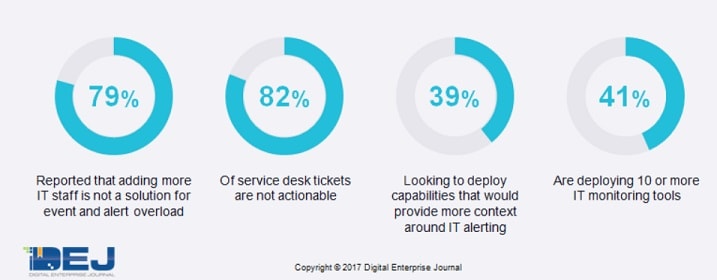
Most organisations have realised that one-size-fits-all support models had become unfit to address the challenges of modern business operations.
Per Gartner analyst Kenneth Gonzalez “I&O leaders that focus on IT-centric ITSM initiatives that are disconnected from business outcomes and value will not be positioned to respond to digital business demands.” And they predict that by 2020 that “Business satisfaction with IT support will decrease by 35% due to an inability of the ITSD to support agile releases in a timely and effective manner”
Therefore it is crucial that support organisations and service desks prepare for the future, now.
Do more with what you have!
As our industry transforms and matures, last century standards for cross-team communication become less and less efficient and certainly can’t keep up with today’s fast paced environment requirements. The “call us and we’ll fix it” model no longer works. Support really needs to be far more proactive, and that means spending less time that involves “firefighting” or “keeping the lights on”.
We’ve started to hear about Self-service portal, virtual agent, ChatBots, DevOps-org, Self-healing systems, Incident response automation, knowledge management and AI as a way to help to cope with the rising number of requests, incidents and complexity.
All these technologies can help to some extent, but each organisation should really review carefully their current challenges but also anticipate future needs before selecting the solution that can fulfill today’s requirements and tomorrow’s (new) needs.
Instead of looking at the vendors and solutions first, here’s the way I like to look at it. Use the ITIL prescribed Impact-Urgency lens to rank the IT Services and identify the candidates for automation.
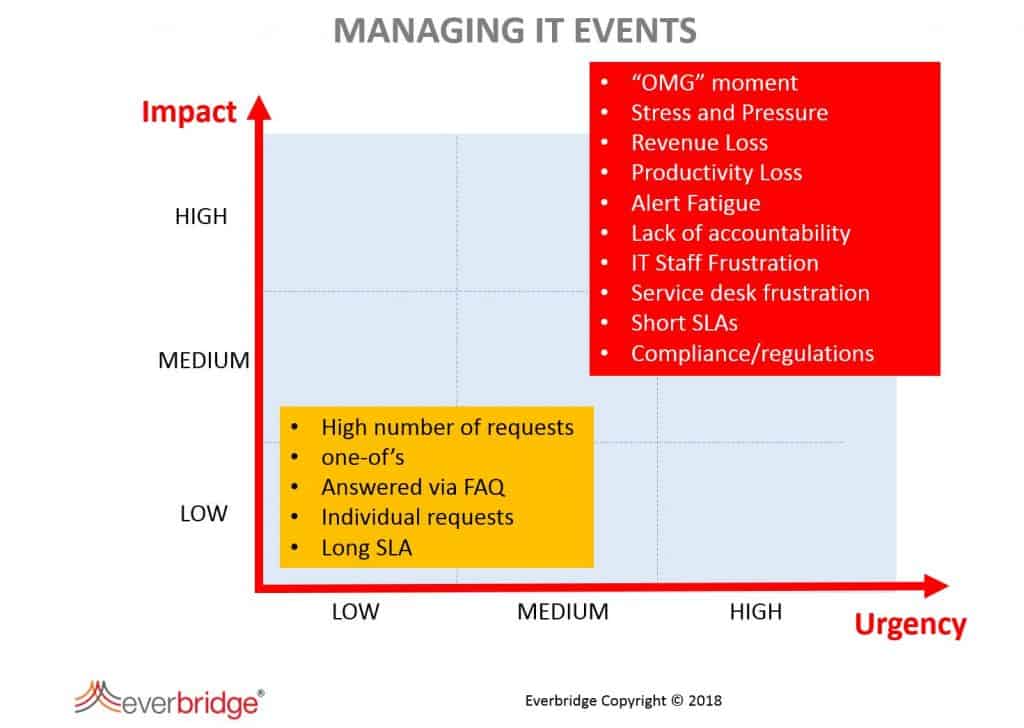
On the one hand, identify the low priority request and therefore the less critical services (password reset request, access right changes, application user creation, new development environment request…). On the other hand, look for the services where the number of impacted users is high and the speed at which the service need to be restored is high.
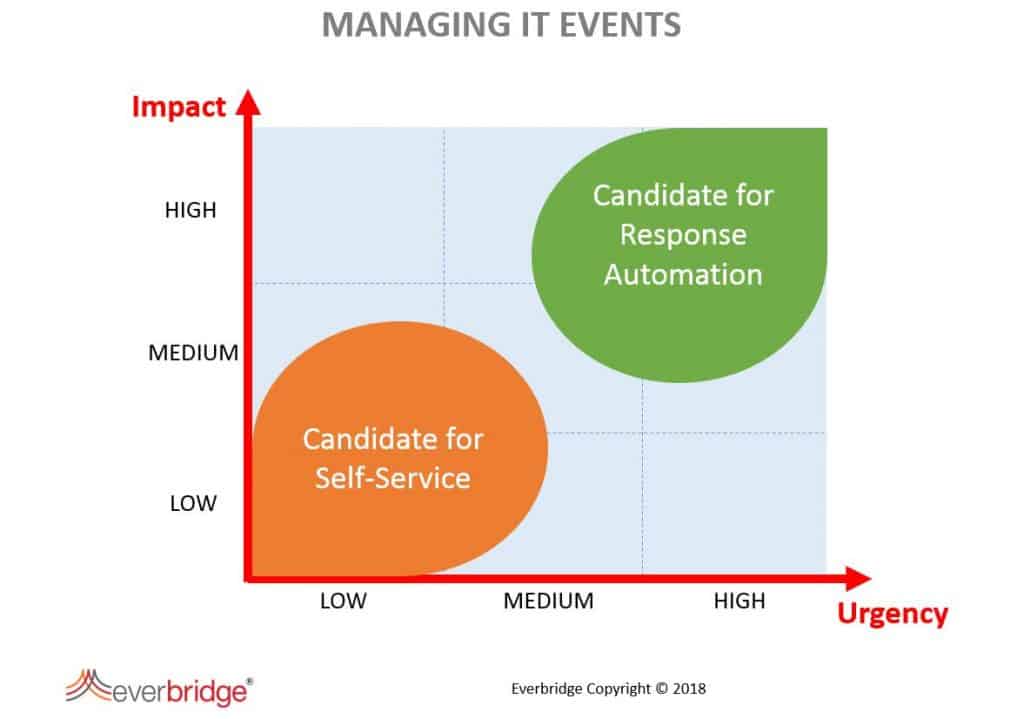
We’re already seeing an increased adoption of self-service portals for non-urgent and non-critical service requests and this will continue to increase as AI takes off. At the other end of the spectrum, for when dealing with major incidents we also see an increasing adoption of Incident Response Automation solutions which help respond faster to cyber and traditional incidents as well as accelerating the remediation as some offer orchestration capabilities as well.
Let’s meet and share Ideas at SDI18!
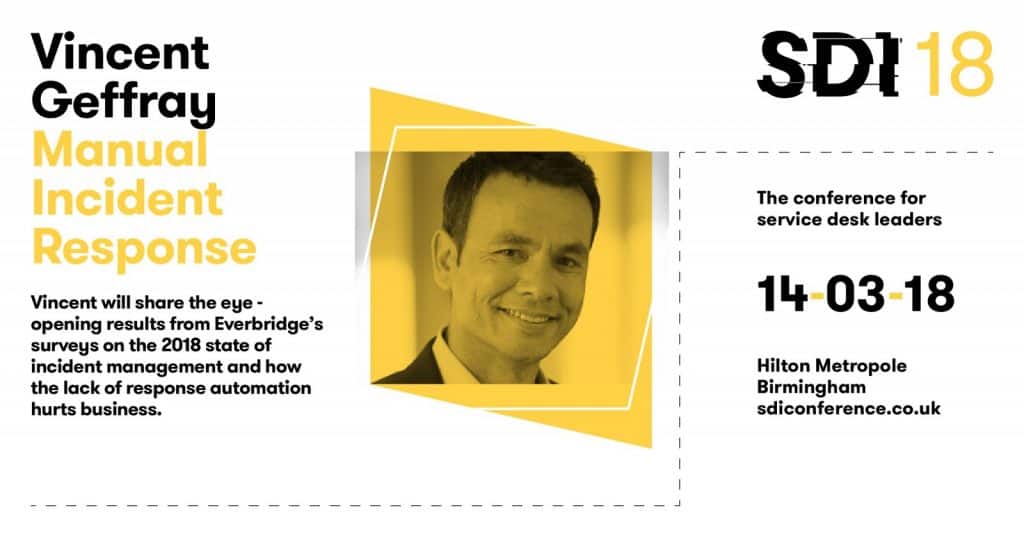
Vincent Geffray will be speaking at SDI18 on Manual Incident Response, book your tickets for The Conference For Service Desk Leaders now!
About the author:
Vincent Geffray is a senior director of product marketing at Everbridge (NASDAQ: EVBG), focused on delivering enterprise solutions to improve IT Team collaboration and performance. He has more than fifteen years of experience in the IT Operations and ITSM space, with expertise in critical event management, incident response management, service alerting, application performance management, and IT process, runbook, and workload automation.








